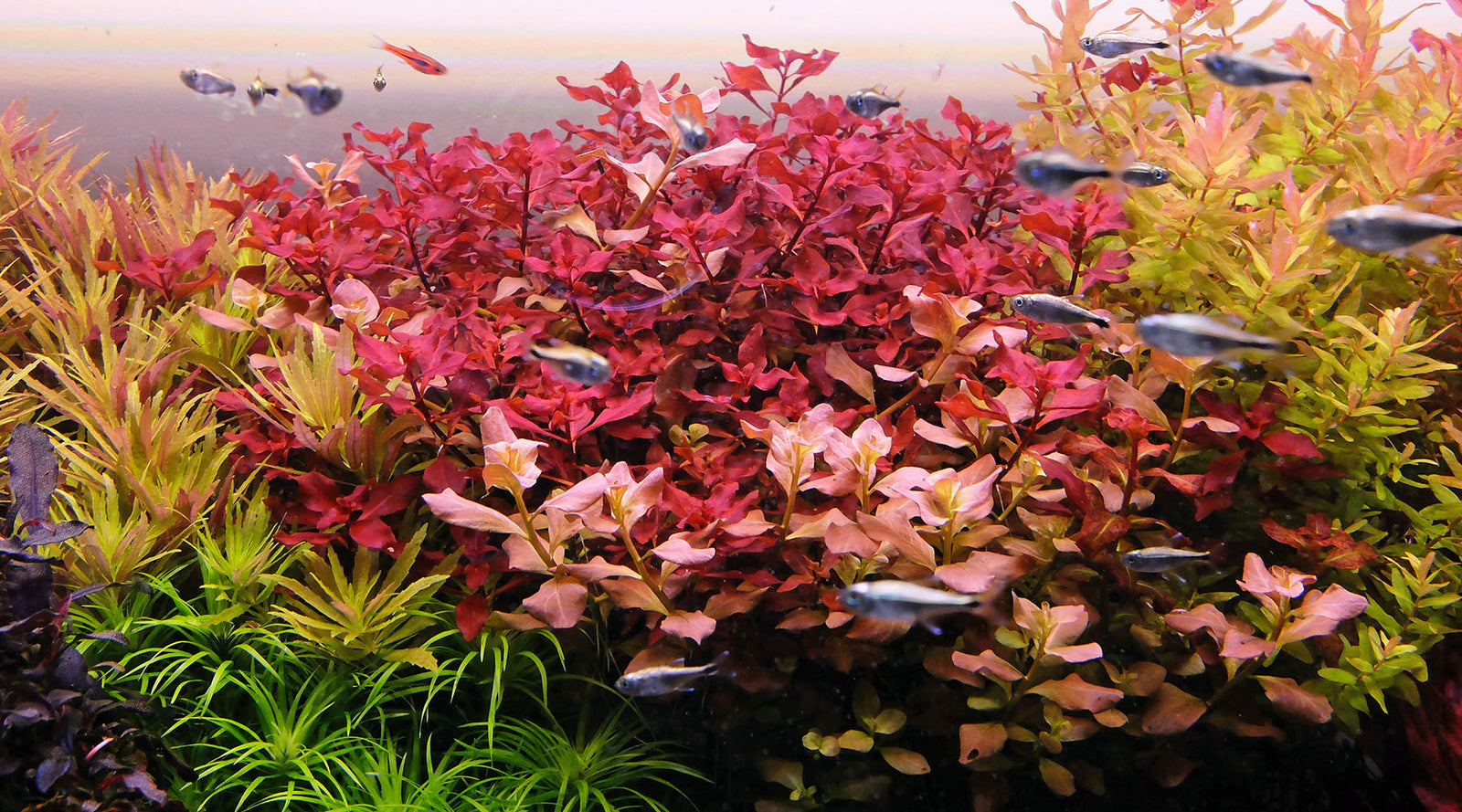
Introduction
Ludwigia sp. ‘Super red’ is actually a varietal of Ludwigia palustris. It is know under many trade names such as Ludwigia ‘mini super red’ and Ludwigia sp. ‘red’ and they all refer to the same plant. There isn’t a mini version – plants grow under lean conditions are just smaller in size compared to plants grown in richer nutrient environments.
Ludwigia ‘super red’ has been a popular plant in the hobby as it is easy to grow and is easy to grow to nice redness compared to pickier plants such as Rotala macrandra. The leaves are completely red both topside and underside. This plant grows in a wide range of conditions; it is not particularly picky about water parameters, but does require higher lighting conditions to show good coloration. As a fast grower that is not picky about water parameters, it is a good indicator plant for nutrient levels; which can be provided either at the root zone or water column.
It grows tall in time, and is best used in the mid-ground or background. It should be trimmed regularly to form a nice canopy – left to its own devices the plant usually grows messily. As the leaves are loosely formed; larger, bushier clumps give a much better visual impact compared to single stems.
Ludwigia sp. ‘super red’ – lipstick red under Maxlite LED in this photo. Grown under low nitrate conditions – it adopts a smaller form in this environment.
key success factors
- Higher light levels (50-100+umols of PAR)
- Well rounded fertilization
- Regular pruning to maintain bushier form
- Having at least some CO2 improves coloration & plant health
How to get it redder
- Stronger light (higher PAR values)
- Stronger red/blue light spectrum
Ludwigia sp ‘Super red’ contrasts well with green plants. It is an aggressive grower, and can be grown easily along side other aggressive growing plants. It will shade slower growing plants if not trimmed regularly.
How to trim
Cut off the stem at a node some distance below the final height that you want the plant to grow to. Stagger the cutting height shorter at the front and taller at the back to get a nice slope. As new shoots appear on the cut stem base, cut off outlier shoots that do not match the slope of the cluster. Over time, this will produce neat bunches of plants.
Head here to find out how to read PAR values.
Head here to find out how to fine tune light spectrum.



